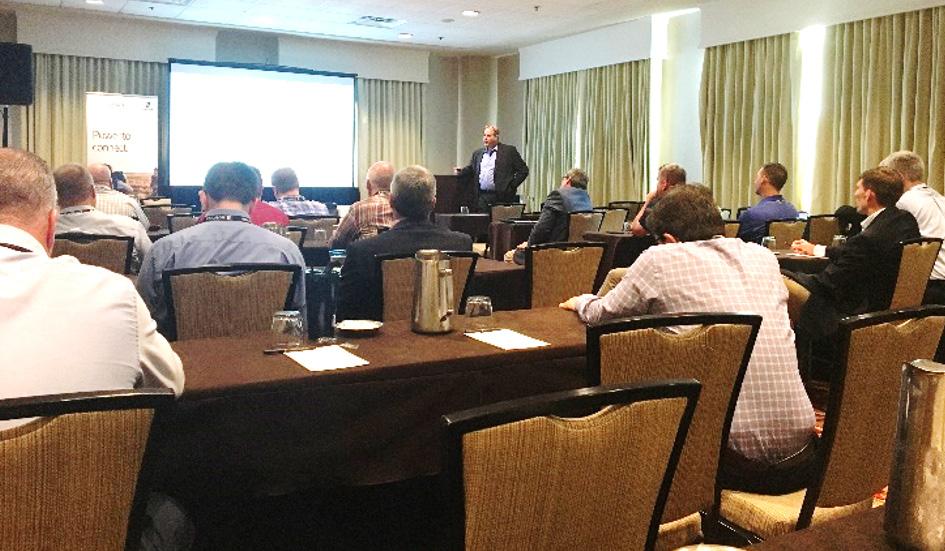
3 minute read
The benefits of dual-mode 5G Core
The benefits of a dual-mode 5G Core
Taking a dual-mode approach to core evolution
Ericsson’s knowledge and experience now apply to 5G. Commercial deployments will feature one core for multi-access and service delivery, known as a “dual-mode 5G Cloud Core.”
This solution enables communications service providers to introduce 5G services flexibly and at their own pace, supporting current services while reducing total cost of ownership (TCO) with an all-cloud native solution. Simultaneously, Ericsson is introducing new network exposure capabilities, which will drive new revenue opportunities by making the core network truly programmable.
Network traffic and subscription forecasts continue to grow, boosted by the anticipation of new 5G-enabled applications and complementary technologies, such as the Internet of Things (IoT) and vehicle-to-everything (V2X). By 2024, mobile data traffic is expected to see a 30 percent compound annual growth rate (CAGR) – 35 percent of which is carried by 5G networks. Next-generation technologies will help create applications that are not yet imaginable, but delivering them reliably and profitably requires an efficient, flexible and programmable core network.
Steps to a smooth 5G introduction
From a core perspective, there are two main phases to supporting 5G New Radio (5G NR). The first phase – non-standalone (NSA) – is based on an enhanced Evolved Packet Core (EPC), which Ericsson calls 5G EPC. This phase supports 5G NR radio using an updated 4G core. The second phase –NR standalone (SA) – is a new 5G core (5GC) built on a service-based architecture (SBA). The timings and steps each service provider takes on their 5G journey will
The many cost efficiencies of dual-mode 5G Cloud Core
Cloud Core Resource Controller
Cloud Core Data-Storage Manager
Data layer
SBA architecture
Cloud Core Subscription Manager
Cloud Core Policy Controller
Pocket Core Controller
Cloud Core Exposure Server
Signaling Controller
Control plane
NR SA LTE / NR NSA LTE GSM / WCDMA
Pocket Core Gateway
User plane
Key benefits of Ericsson’s dual-mode 5G Cloud core:
• 20-percent savings in infrastructure • 75-percent cost savings in network and O&M integration • 30-percent less user plane footprint • 90-percent reduced opex for software upgrades
depend on market conditions and when it makes most business sense. Regardless of where you are on your journey, Ericsson’s dual-mode solution for 5G EPC and 5GC Network Functions (NFs) will support your current services, fast and flexible 5G introduction and smooth network evolution, at your own pace.
A single platform for (5G) EPC and 5GC functionalities
Ericsson’s dual-mode 5G Cloud Core solution delivers cloud-native applications that support EPC and 5GC 3GPP architectures, in a single software platform for operational efficiency. The solution consists of Cloud Packet Core, Cloud Unified Data Management (UDM) and Policy, as well as Signaling Controller NFs in eight new products – supporting every generation of mobile traffic from 2G to 5G. Ericsson’s solution protects existing network investments by allowing full integration of new cloud-native NFs with virtualized or physical NFs in the same network, and offers different migration paths to bring all NFs into the full cloud-native, dual-mode 5G Cloud Core over time.
Cloud-native and microservicebased architecture
The dual-mode 5G Cloud Core solution is based on cloud-native principles, with a software architecture underpinned by microservice technology. This approach provides the elasticity to scale according to capacity needs and permits high levels of orchestration and automation. Importantly, it also supplies a software solution agnostic of the underlying infrastructure, delivering flexibility and cost efficiency for service providers. Basing Ericsson software on microservices improves software quality, minimizes risks and brings new functionalities to the market faster. Continuous software integration, delivery and deployment (CI/ CD) is fundamental in the approach to leveraging cloud-native benefits. Along with the continuous flow of software upgrades, Ericsson is introducing “zero touch” to automate the software pipeline. Collectively, these measures continuously improve software quality, ensure faster time to market for new services and provide up to 90 percent CI/CD savings in a fully cloud-native environment.
Learn more about dual-mode 5G core here.
Key benefits of dual-mode core
Future proof your investment
Manage different deployment models
(i.e., IoT and edge use cases)










